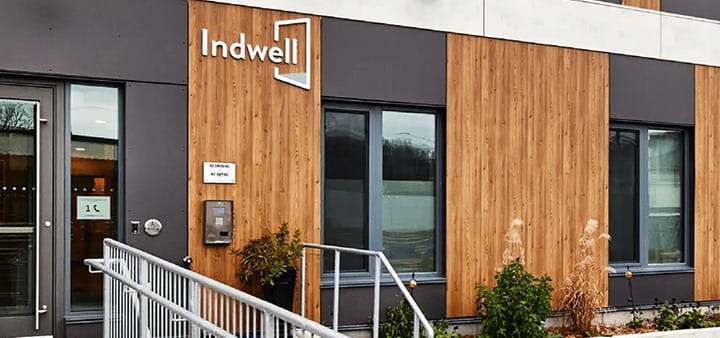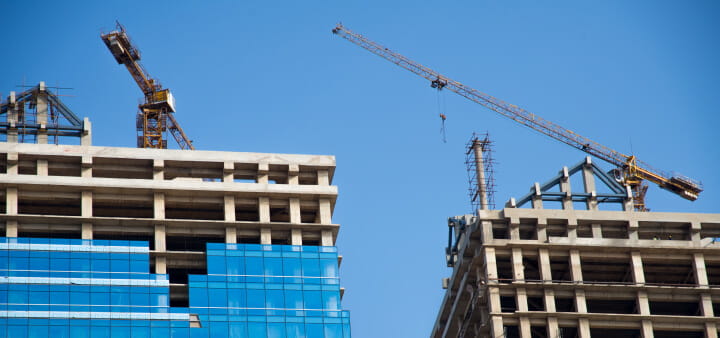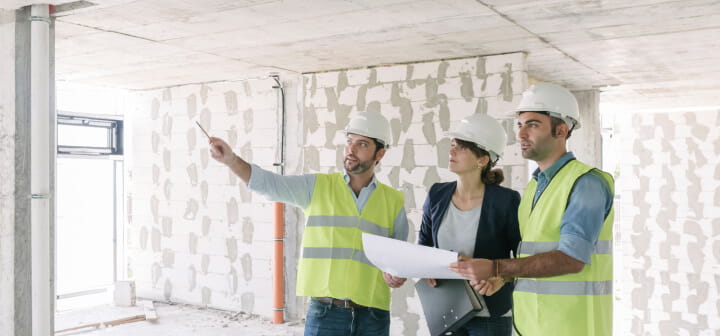Expert help and incentives to test commercial building airtightness
Even the best commercial building envelope design can fall short of optimal performance as a result of construction misses. Commercial airtightness testing provides an opportunity to identify and address issues before the building is occupied, to avoid much more difficult and costly corrections.
For commercial and multi-residential builders and developers, Enbridge Gas provides incentives up to $45,000* for testing and to resolve any issues discovered in the process, to help ensure intended performance standards are achieved. Airtightness testing should take place before the envelope is fully constructed to provide early identification of potential air leakage issues in order to qualify for incentives.
Enbridge Gas also offers free technical airtightness workshop to eligible individuals and organizations as part of the Commercial Airtightness Testing program. To learn more, click on the educational workshops section below.
Incentives up to $45,000*
Commercial and multi-residential builders and developers can earn incentives that reward them for a high-performance building envelope.
| Airtightness testing incentive |
|---|
| Up to 80 percent of costs covered for performing airtightness testing |
|
| Implementation incentive |
|---|
| Up to 50 percent of costs covered for resolving air leakage issues |
|
Airtightness testing delivers energy and cost savings
Indwell participated in the Enbridge Gas Commercial Airtightness Testing program. By performing building envelope airtightness testing, they were able to significantly reduce air leakage and annual heating loads*. Read the story.

Which projects are eligible?
-
Commercial, institutional or multi-residential new construction projects before the envelope is fully constructed to provide early identification of potential air leakage issues.
-
25,000 sq. ft. or greater.
-
Located in the Enbridge Gas service area.

Frequently asked questions
For best results, plan for airtightness testing early on. This will allow testing to be scheduled into the construction timeline at critical milestones to reduce delays and avoid costly changes during construction.
Builders or developers of new construction commercial or multi-residential buildings should engage an Enbridge Gas Energy Solutions Advisor before starting their next project—the pre-commissioning phase is a crucial time to find deficiencies in building envelope performance and address them accordingly—this helps reduce delays and avoid costly changes during construction.
For commercial and multi-residential buildings, the test involves the temporary installation of multiple fans and blower doors. Test equipment measures how much air is leaking into or out of the building.
Airtightness is not just about walls, doors and windows. In modern buildings, the air leakage through the mechanical system, grills and openings can also be significant.
If building envelope deficiencies are not addressed early, they can reduce overall building performance, increasing energy consumption and costs to customers over the lifetime of the building. This program offers a final check, before the building envelope is fully constructed, to compare between modelled airtightness and constructed airtightness.

Who can benefit from workshops?
Commercial airtightness testing workshops will be best suited for individuals with building envelope or commissioning interest or experience.
Also, those with a work and/or educational background in building enclosure, energy modelling, architecture, building sustainability, structural engineering, energy auditors or similar, and general contractors may find airtightness testing workshops helpful.
What’s covered in the workshop?
An online course followed by a full day of in-person classroom workshop with hands-on simulated tests.
Online course modules
- Building science of air control
- Airtightness testing large buildings
- Planning for airtightness testing
- Testing equipment
- Test day
- Test results and analysis
- Reporting
Classroom training
- Preparing the building for temporary air sealing
- Setting up for testing using multiple blower doors
- Operating the blower doors using laptop software
- Calculating testing parameters
Upon completion, you will receive an instructional manual, presentation materials, documents and supplemental materials.
Frequently asked questions
For best results, plan for airtightness testing early on. This will allow testing to be scheduled into the construction timeline at critical milestones to reduce delays and avoid costly changes during construction.
Builders or developers of new construction commercial or multi-residential buildings should engage an Enbridge Gas Energy Solutions Advisor before starting their next project—the pre-commissioning phase is a crucial time to find deficiencies in building envelope performance and address them accordingly—this helps reduce delays and avoid costly changes during construction.
For commercial and multi-residential buildings, the test involves the temporary installation of multiple fans and blower doors. Test equipment measures how much air is leaking into or out of the building.
Airtightness is not just about walls, doors and windows. In modern buildings, the air leakage through the mechanical system, grills and openings can also be significant.
If building envelope deficiencies are not addressed early, they can reduce overall building performance, increasing energy consumption and costs to customers over the lifetime of the building. This program offers a final check, before the building envelope is fully constructed, to compare between modelled airtightness and constructed airtightness.








